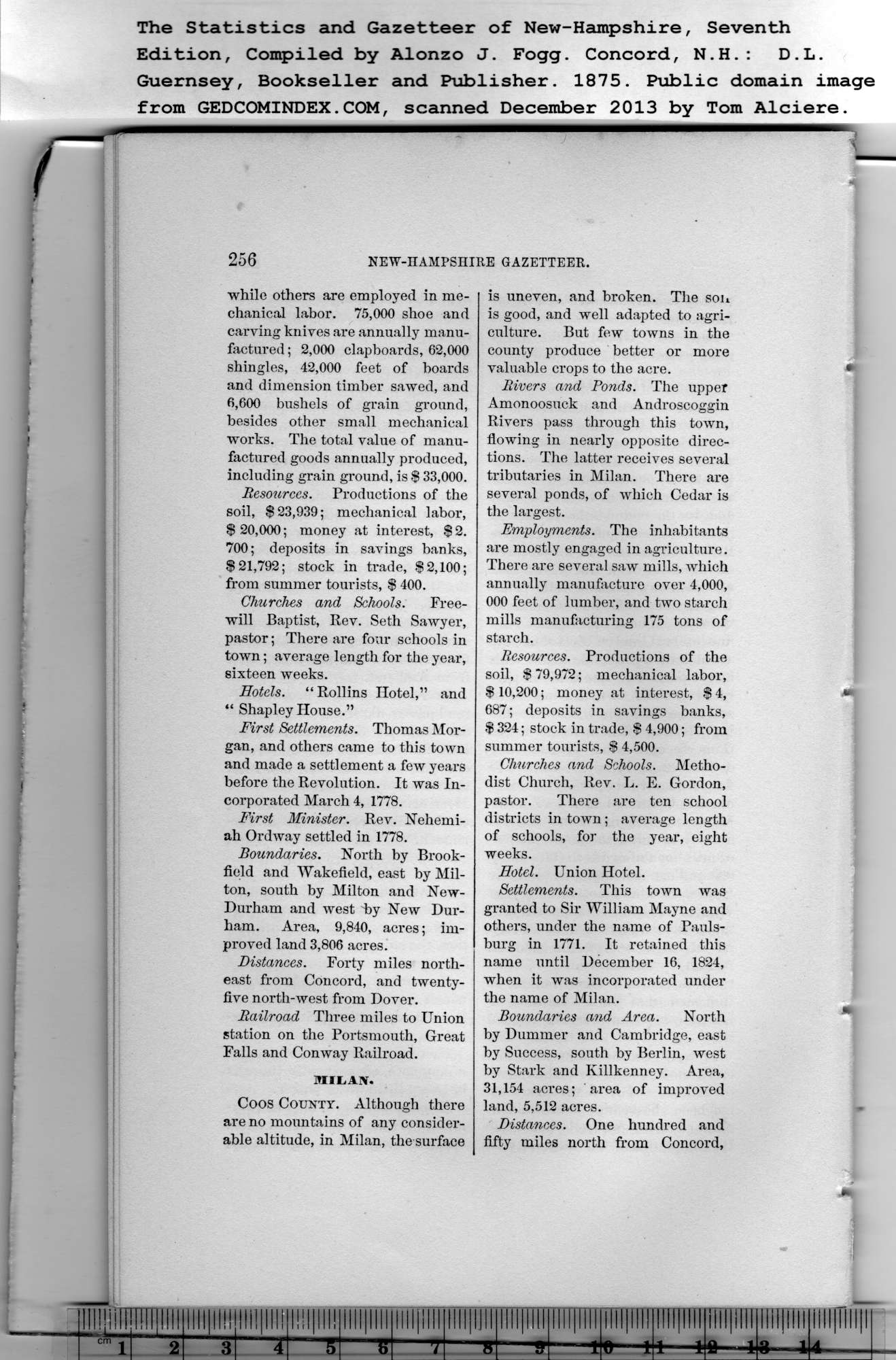|
while others are employed in me-
chanical labor. 75,000 shoe and
carving knives are annually manu-
factured; 2,000 clapboards, 62,000
shingles, 42,000 feet of boards
and dimension timber sawed, and
6,600 bushels of grain ground,
besides other small mechanical
works. The total value of manu-
factured goods annually produced,
including grain ground, is $ 33,000.
Resources. Productions of the
soil, $23,939; mechanical labor,
$ 20,000; money at interest, $ 2.
700; deposits in savings banks,
$21,792; stock in trade, $2,100;
from summer tourists, $ 400.
Churches and Schools. Free-
will Baptist, Rev. Seth Sawyer,
pastor; There are four schools in
town; average length for the year,
sixteen weeks.
Hotels. “Rollins Hotel,” and
“ Shapley House.”
First Settlements. Thomas Mor-
gan, and others came to this town
and made a settlement a few years
before the Revolution. It was In-
corporated March 4, 1778.
First Minister. Rev. Nehemi-
ah Ordway settled in 1778.
Boundaries. North by Brook-
field and Wakefield, east by Mil-
ton, south by Milton and New-
Durham and west by New Dur-
ham. Area, 9,840, acres; im-
proved land 3,806 acres.
Distances. Forty miles north-
east from Concord, and twenty-
five north-west from Dover.
Railroad Three miles to Union
station on the Portsmouth, Great
Falls and Conway Railroad.
MILrAN. |
Coos County. Although there
are no mountains of any consider-
able altitude, in Milan, the surface
is uneven, and broken. The son
is good, and well adapted to agri-
culture. But few towns in the
county produce better or more
valuable crops to the acre.
Rivers and Ponds. The upper
Amonoosuck and Androscoggin
Rivers pass through this town,
flowing in nearly opposite direc-
tions. The latter receives several
tributaries in Milan. There are
several ponds, of which Cedar is
the largest.
Employments. The inhabitants
are mostly engaged in agriculture.
There are several saw mills, which
annually manufacture over 4,000,
000 feet of lumber, and two starch
mills manufacturing 175 tons of
starch.
Resources. Productions of the
soil, $ 79,972; mechanical labor,
$ 10,200; money at interest, $ 4,
687; deposits in savings banks,
$ 324; stock in trade, $ 4,900; from
summer tourists, $ 4,500.
Churches and Schools. Metho-
dist Church, Rev. L. E. Gordon,
pastor. There are ten school
districts in town; average length
of schools, for the year, eight
weeks.
Hotel. Union Hotel.
Settlements. This town was
granted to Sir William Mayne and
others, under the name of Pauls-
burg in 1771. It retained this
name until December 16, 1824,
when it was incorporated under
the name of Milan.
Boundaries and Area. North
by Dummer and Cambridge, east
by Success, south by Berlin, west
by Stark and Killkenney. Area,
31,154 acres; area of improved
land, 5,512 acres.
Distances. One hundred and
fifty miles north from Concord, |
